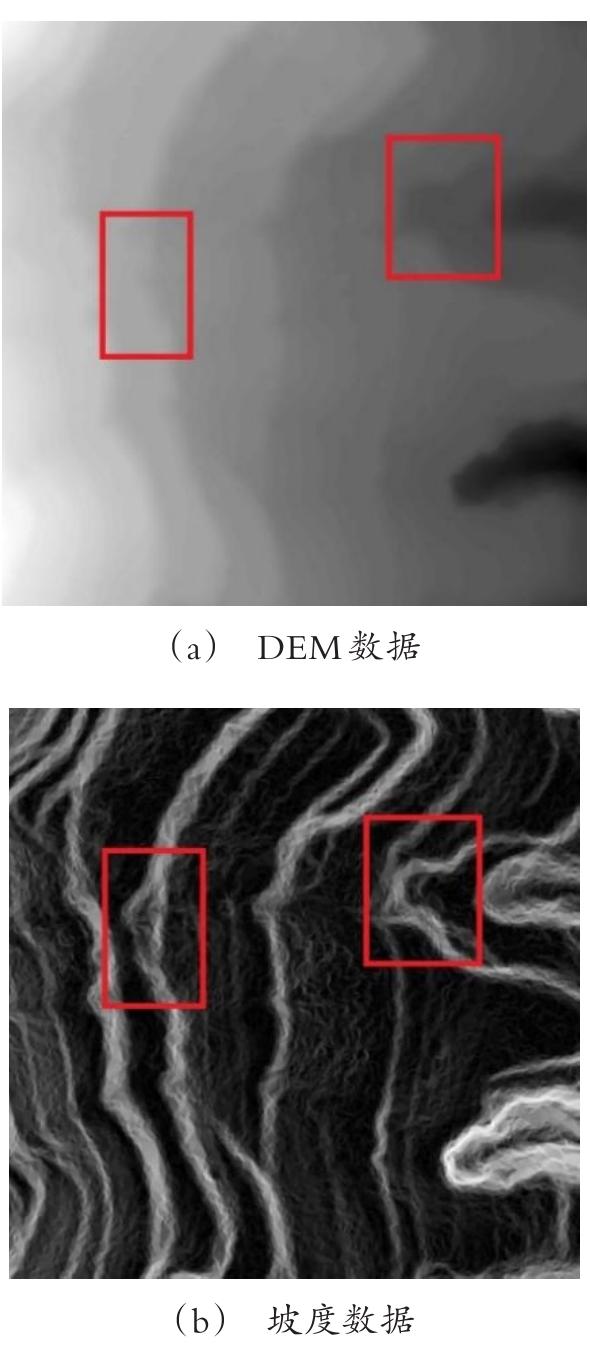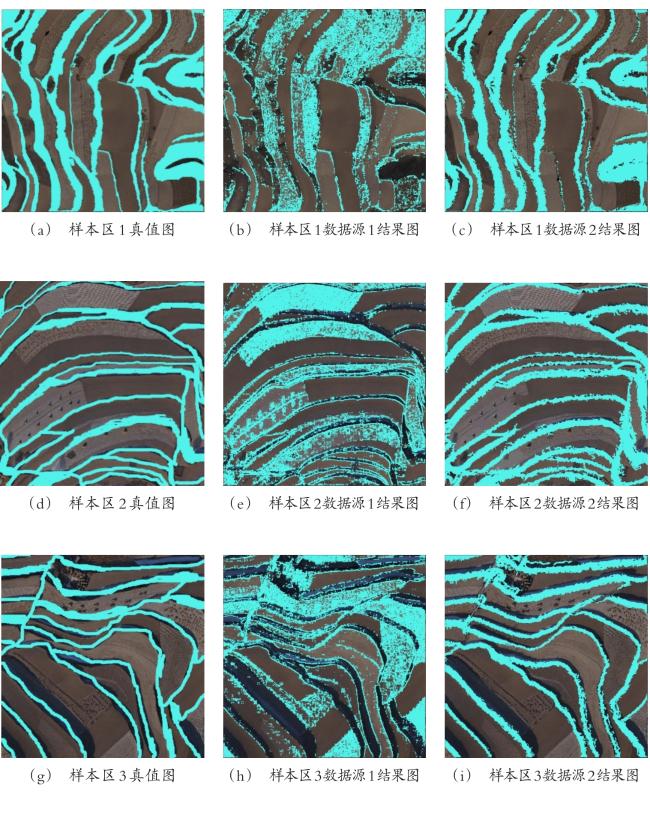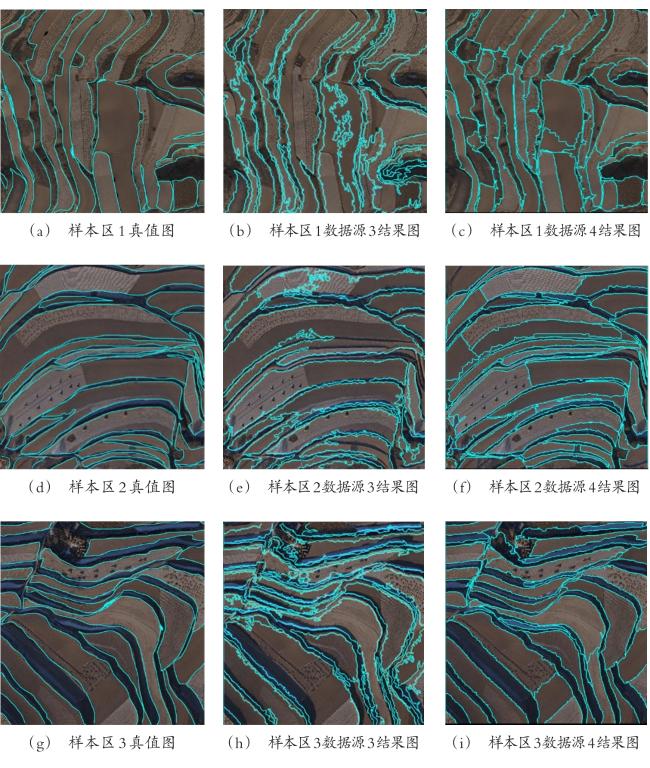1 引言
2 研究区概况与数据预处理
2.1 研究区概况
2.2 数据基础及预处理
2.2.1 数据基础
2.2.2 数据预处理
3 试验方法
3.1 粗边缘提取方法
3.1.1 影像灰度处理及平滑处理
3.1.2 Canny边缘检测
表1 研究区域梯田地物特征规则表Table 1 Terrace land feature classification rule of research area |
| 地物对象 | 梯田边缘 | 丘陵 | 道路 |
|---|---|---|---|
| 边缘长度(pix) | >100 | >300 | >200 |
| 坡度(°) | 7~20 | <15 | 0~6 |
| 坡度变化率(%) | <7 | >20 | 0~2 |
3.2 精细边缘提取方法
3.2.1 直方图均衡化
3.2.2 多尺度分割
3.3 精度评价方法
4 结果分析
4.1 粗边缘提取方法
图7 粗边缘提取样本区结果对比图Fig.7 Comparison results of sample area processed by rough edge extraction |
表2 粗边缘提取样本区精度Table 2 Accuracy of rough edge extraction sample area |
| 样本区 | 数据源1 OA精度(%) | 数据源1 UA精度(%) | 数据源2 OA精度(%) | 数据源2 UA精度(%) |
|---|---|---|---|---|
| 1 | 61.85 | 62.45 | 92.96 | 90.66 |
| 2 | 59.76 | 67.51 | 78.89 | 83.07 |
| 3 | 63.97 | 66.77 | 85.63 | 85.04 |
4.2 精细边缘提取方法结果
图9 精细边缘提取样本区结果对比图Fig.9 Comparison results of sample area processed by meticulous edge extraction |
表3 精细边缘提取样本区精度Table 3 Accuracy of meticulous edge extraction sample area |
| 样本区 | 数据源3 OA精度(%) | 数据源3 UA精度(%) | 数据源4 OA精度(%) | 数据源4 UA精度(%) |
|---|---|---|---|---|
| 1 | 67.40 | 70.7 | 81.73 | 83.54 |
| 2 | 65.26 | 67.76 | 84.50 | 82.2 |
| 3 | 62.07. | 59.09 | 82.03 | 88.83 |

















